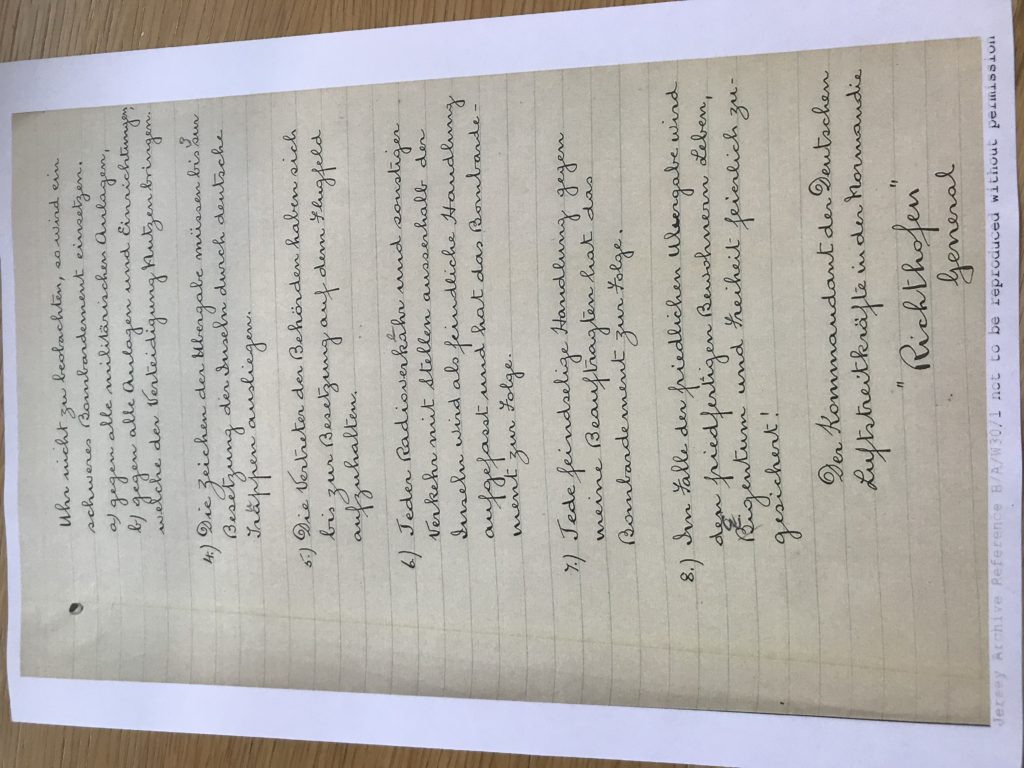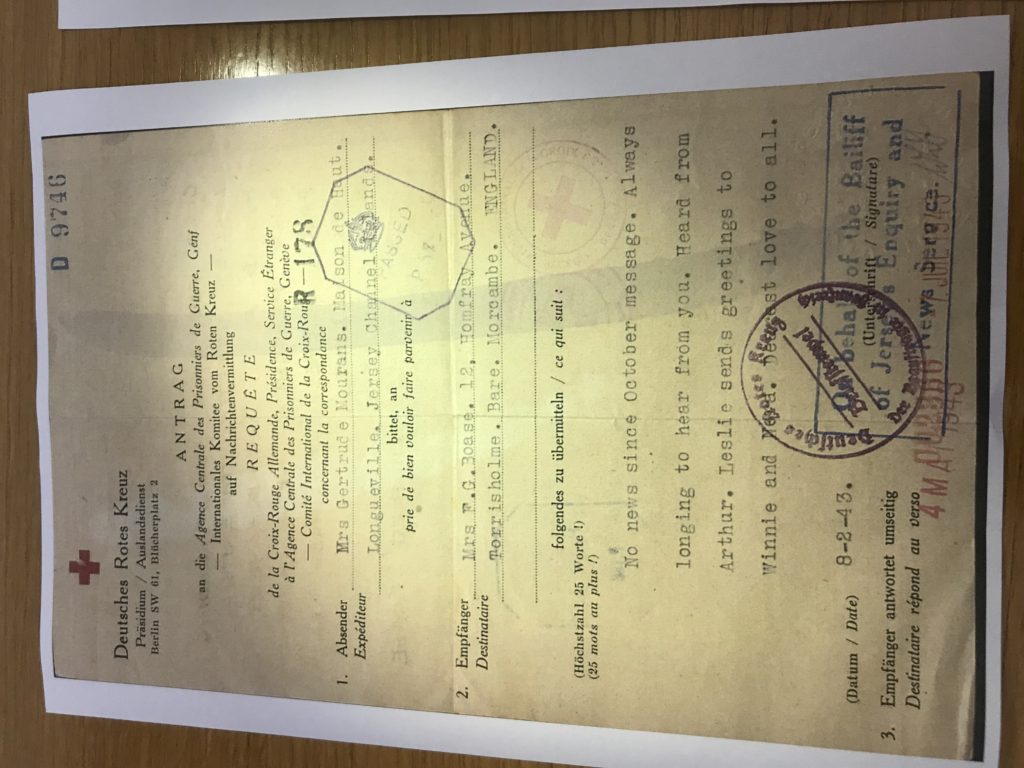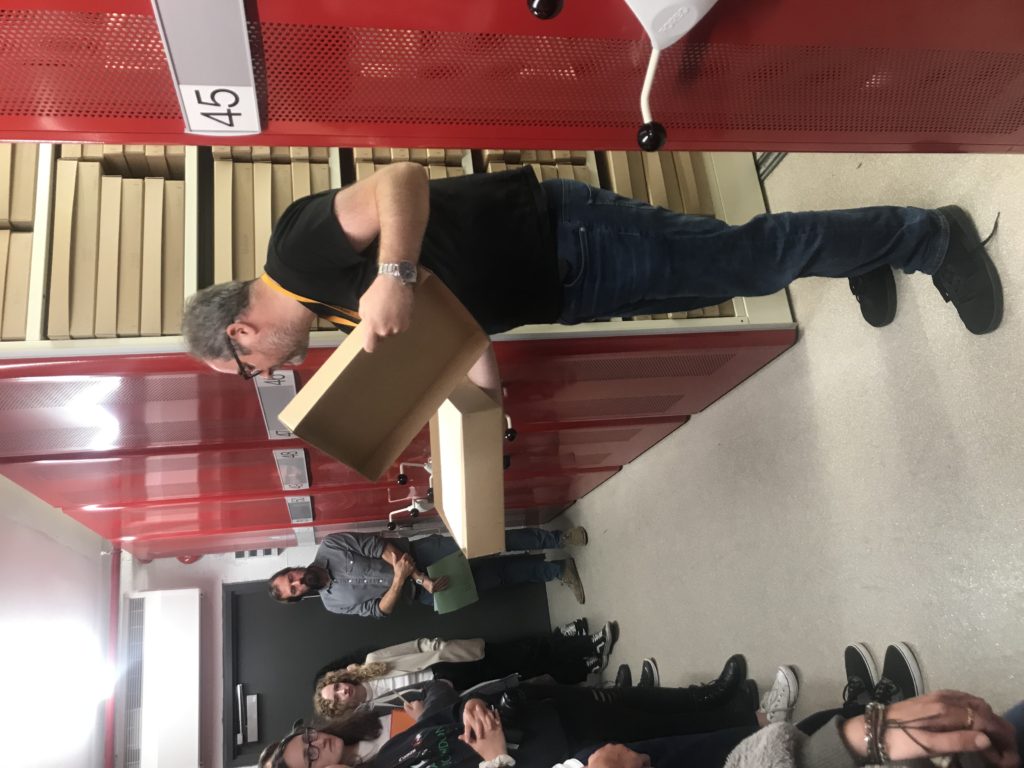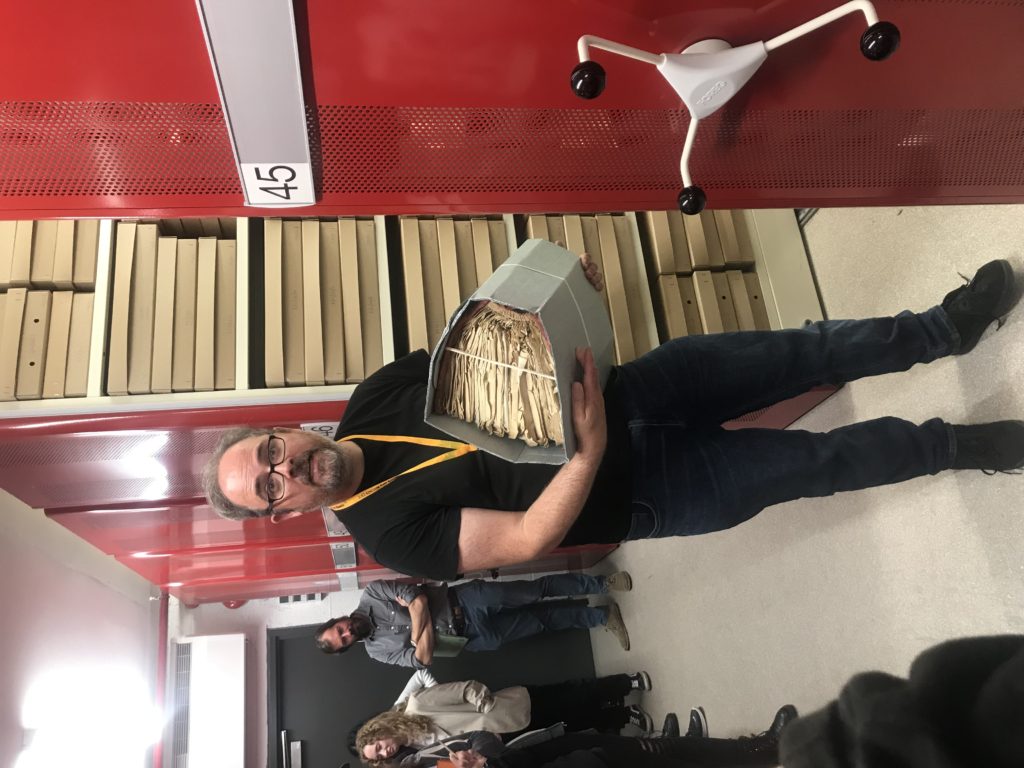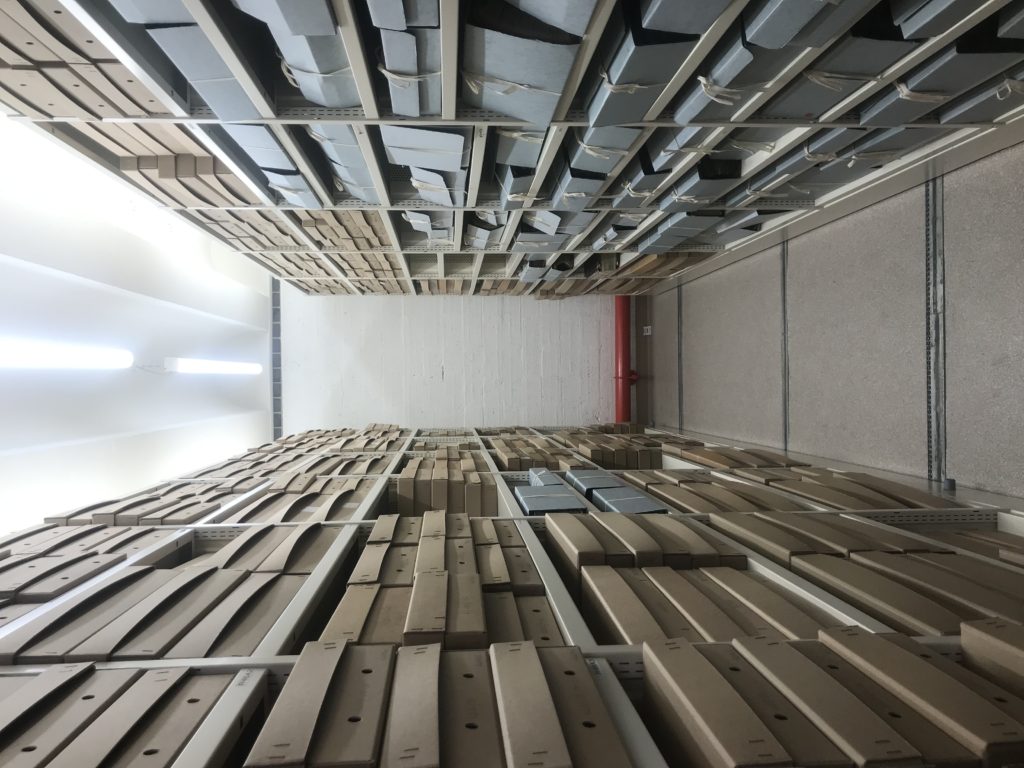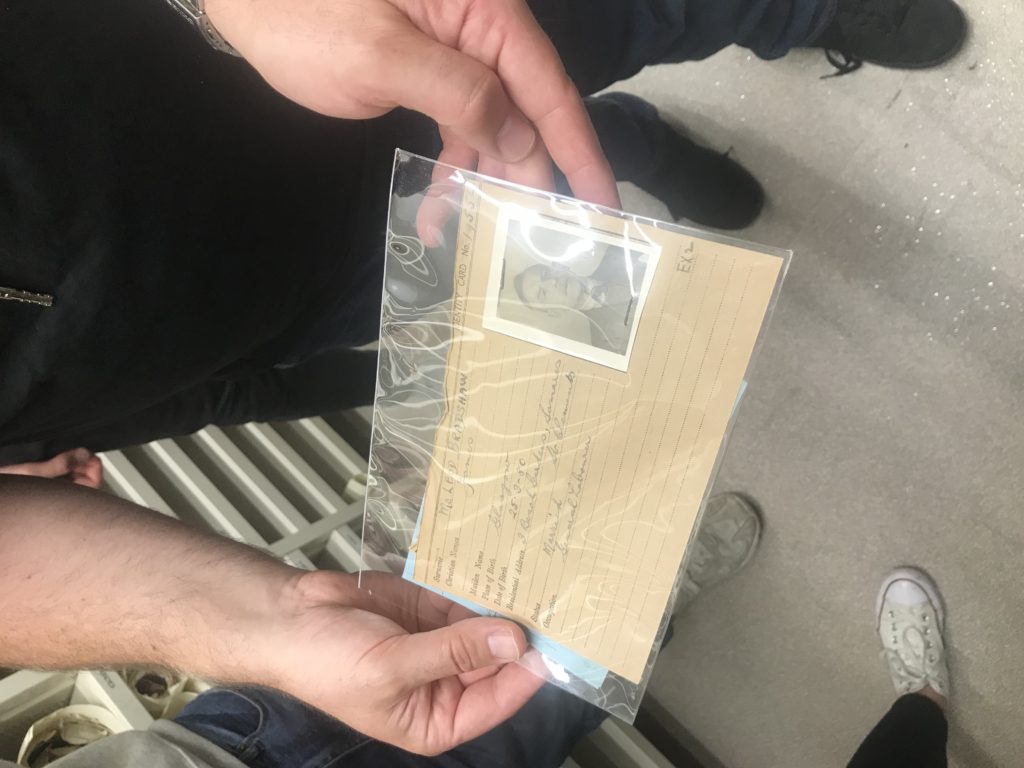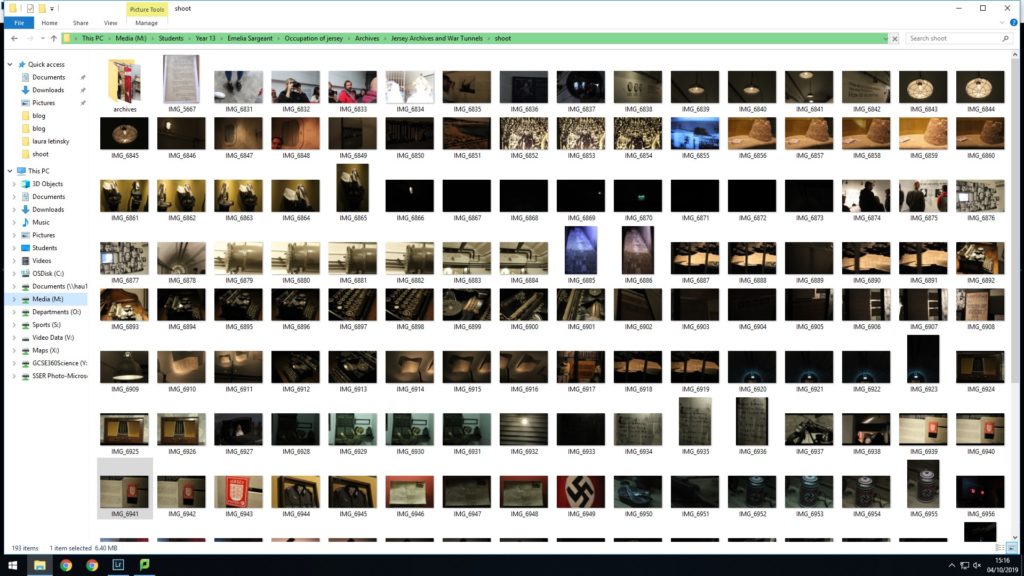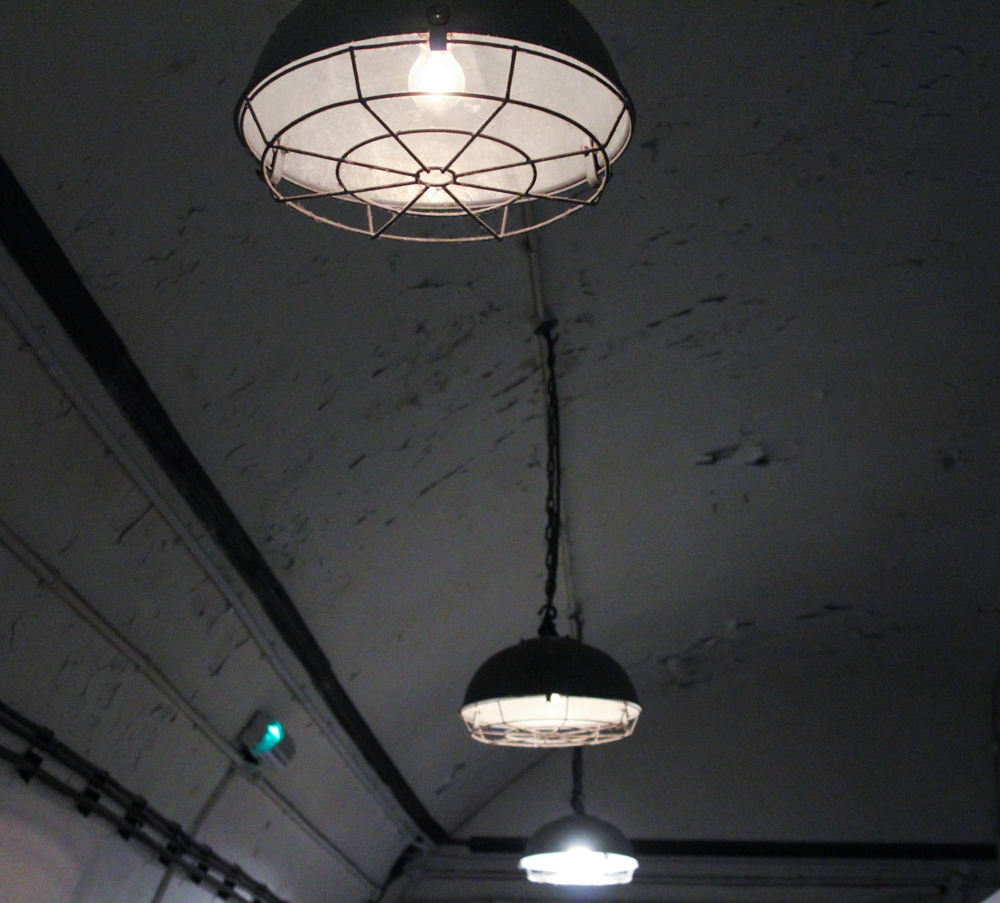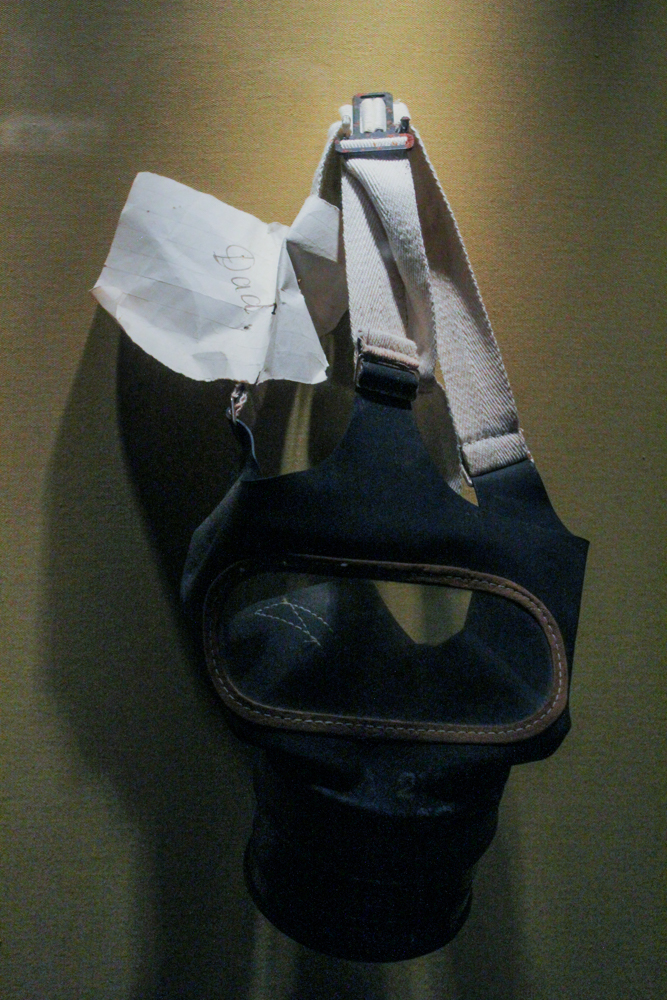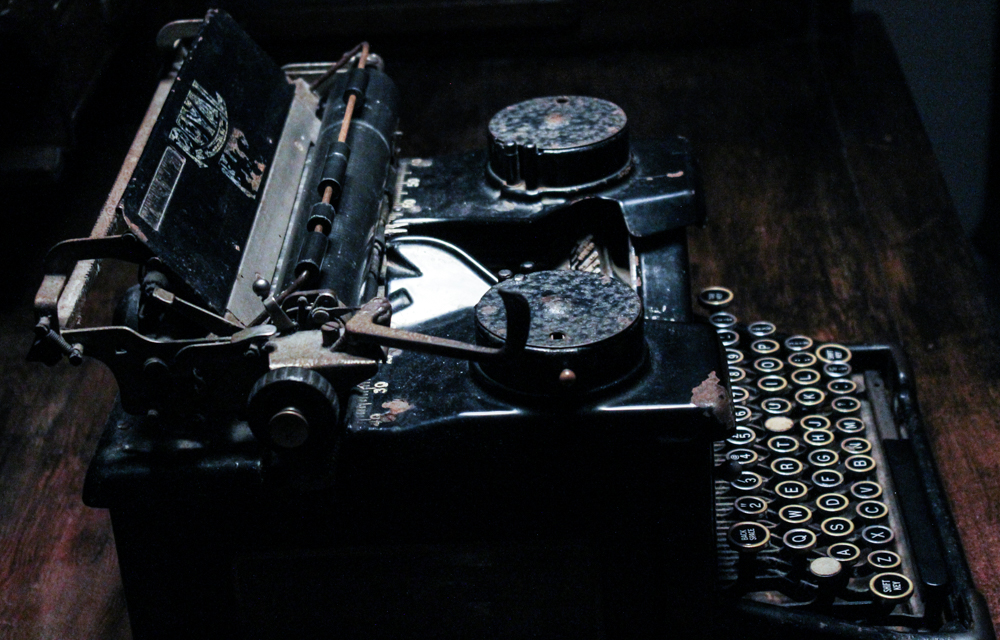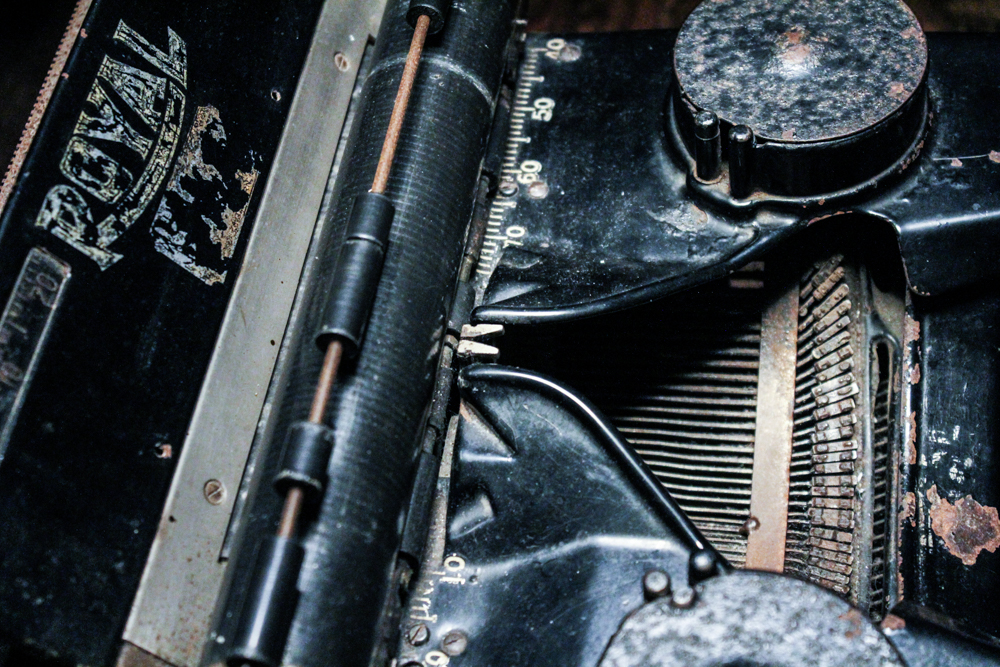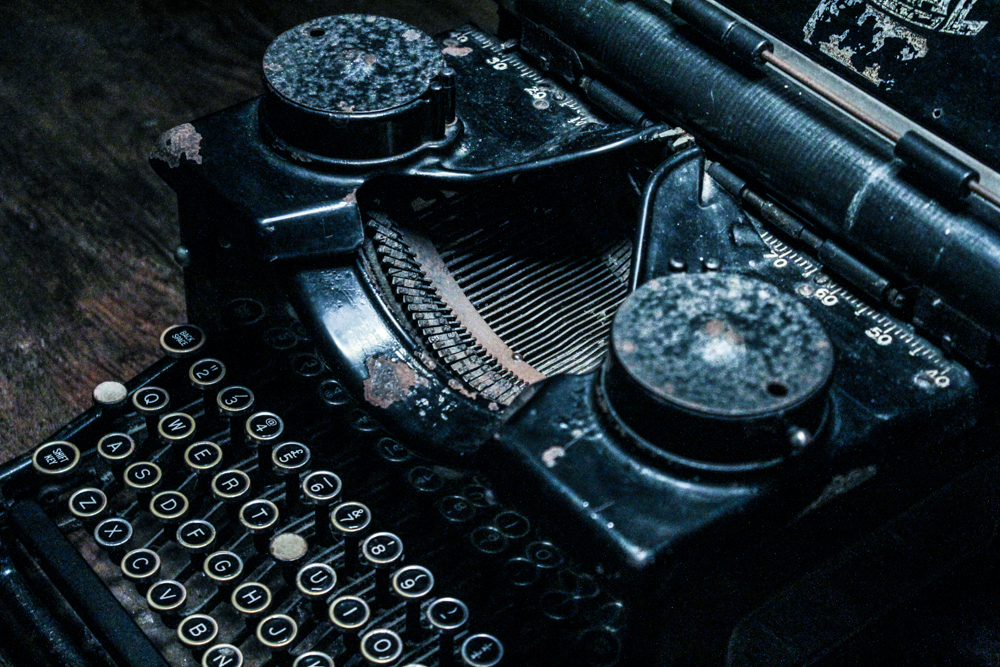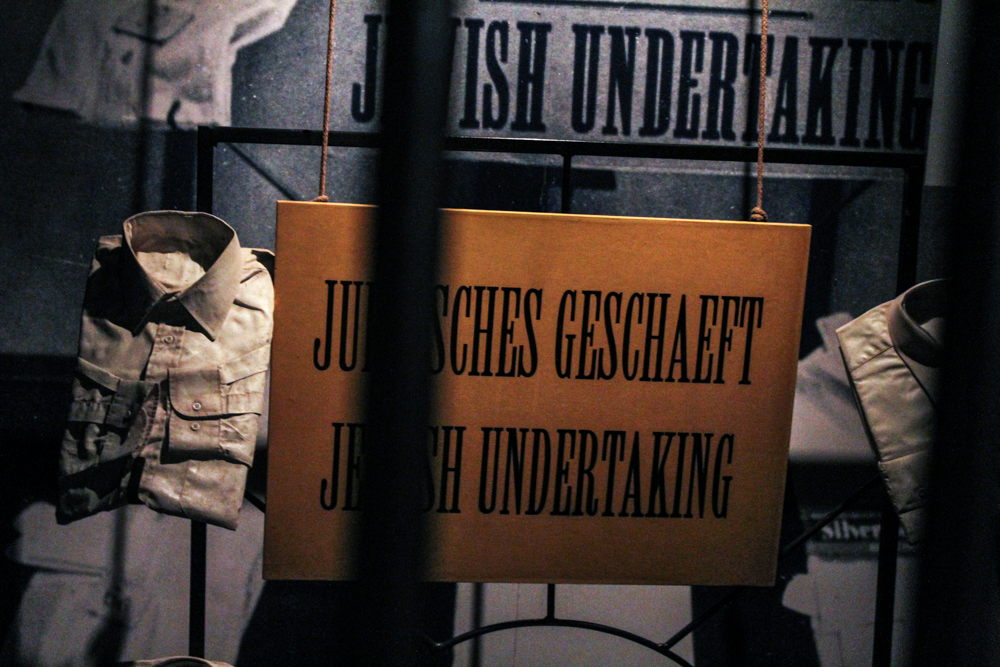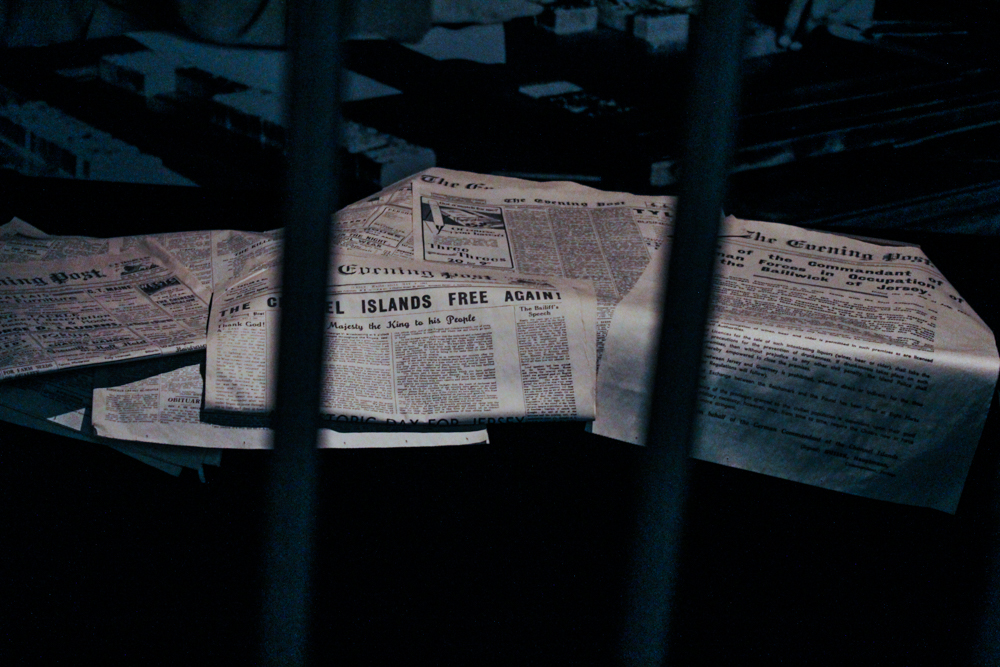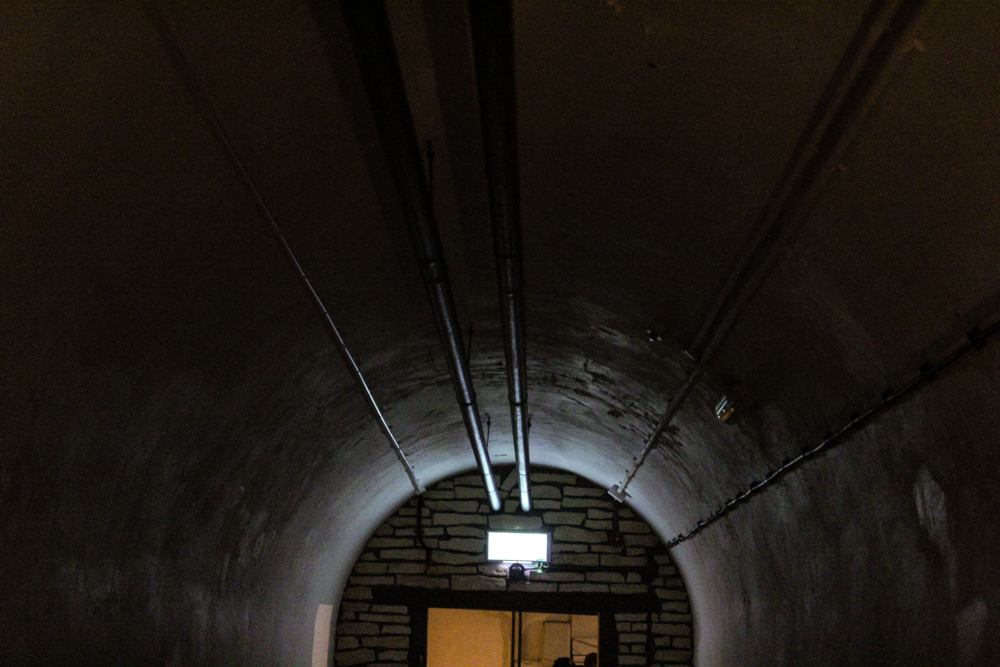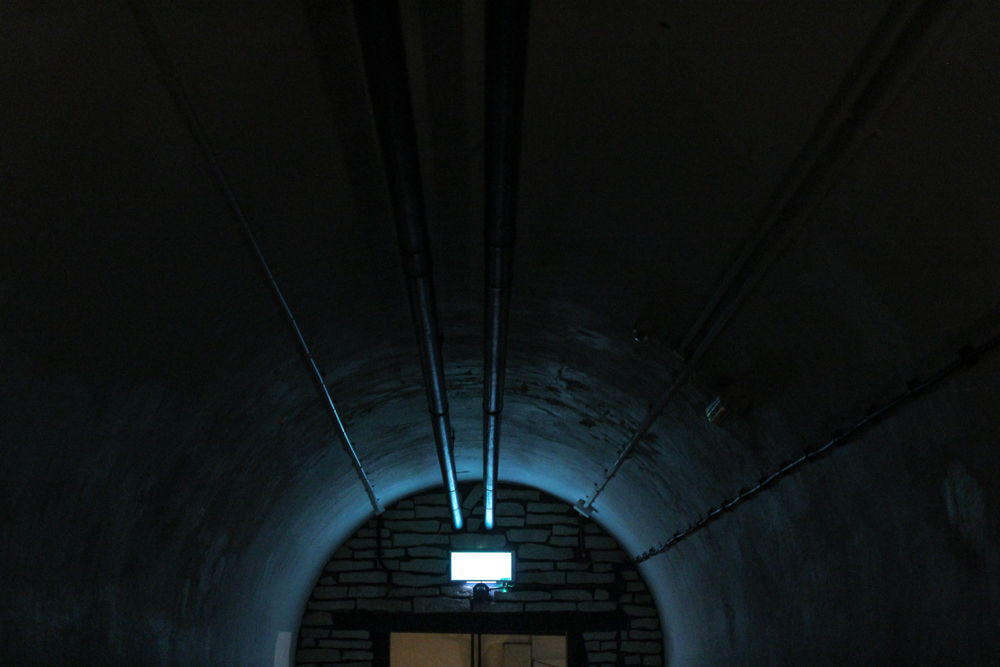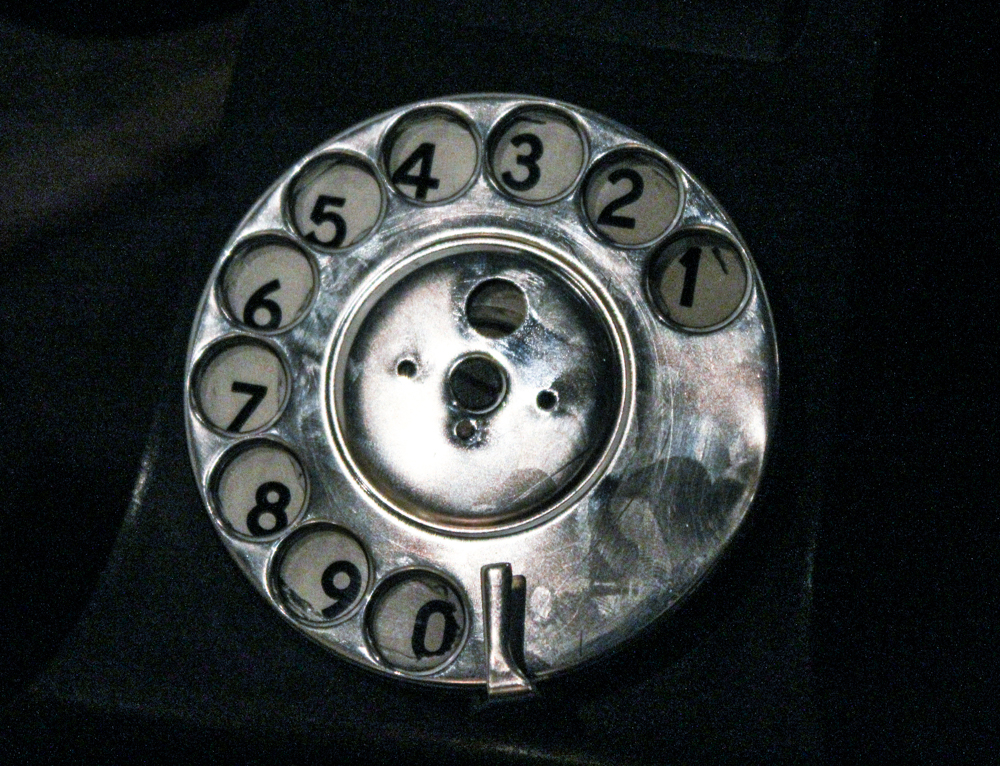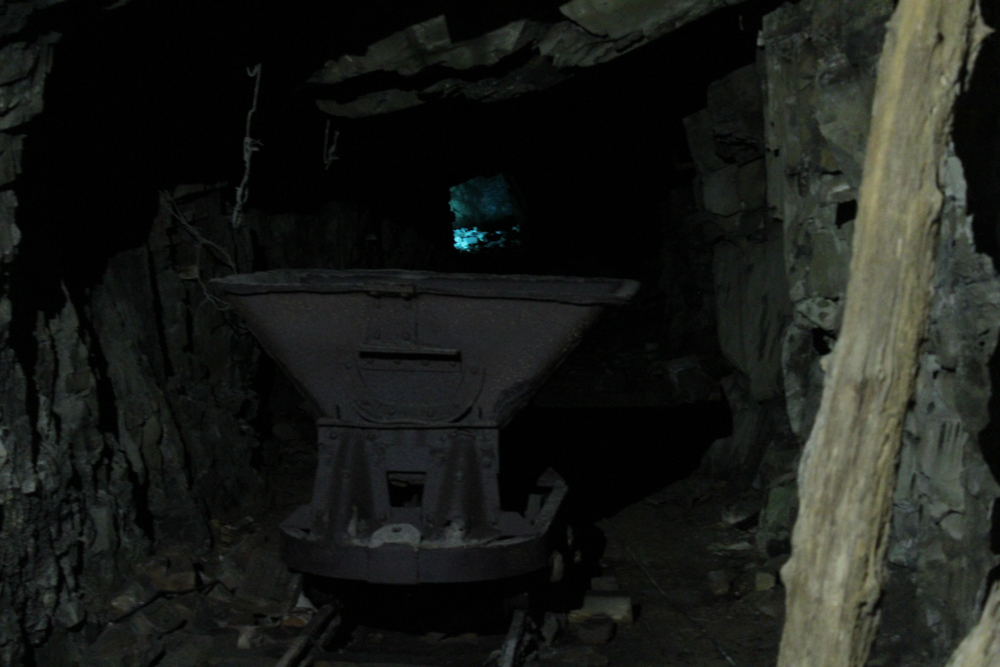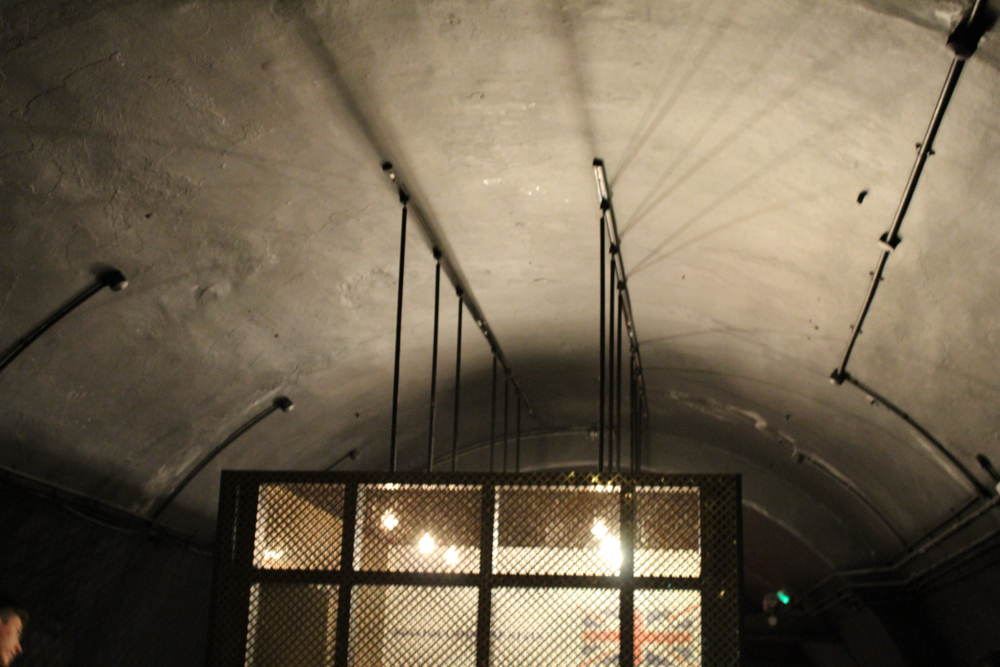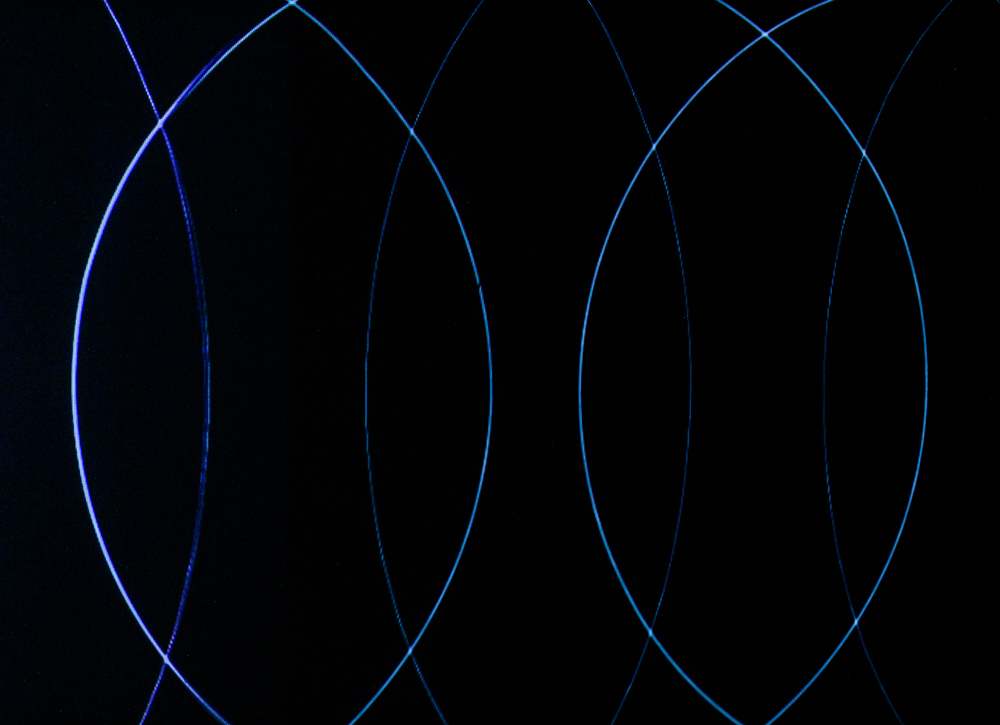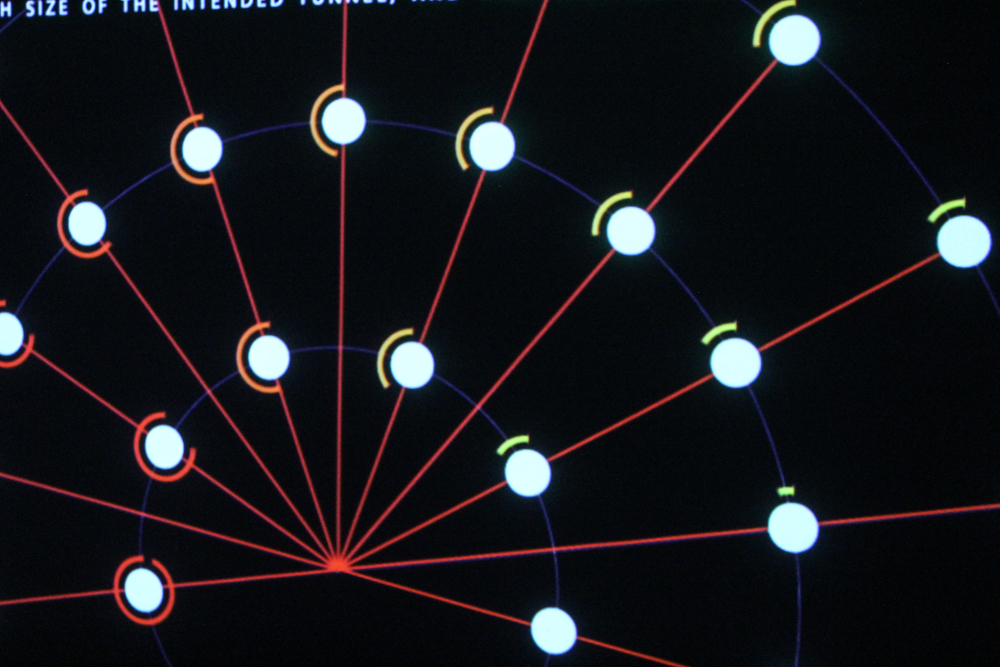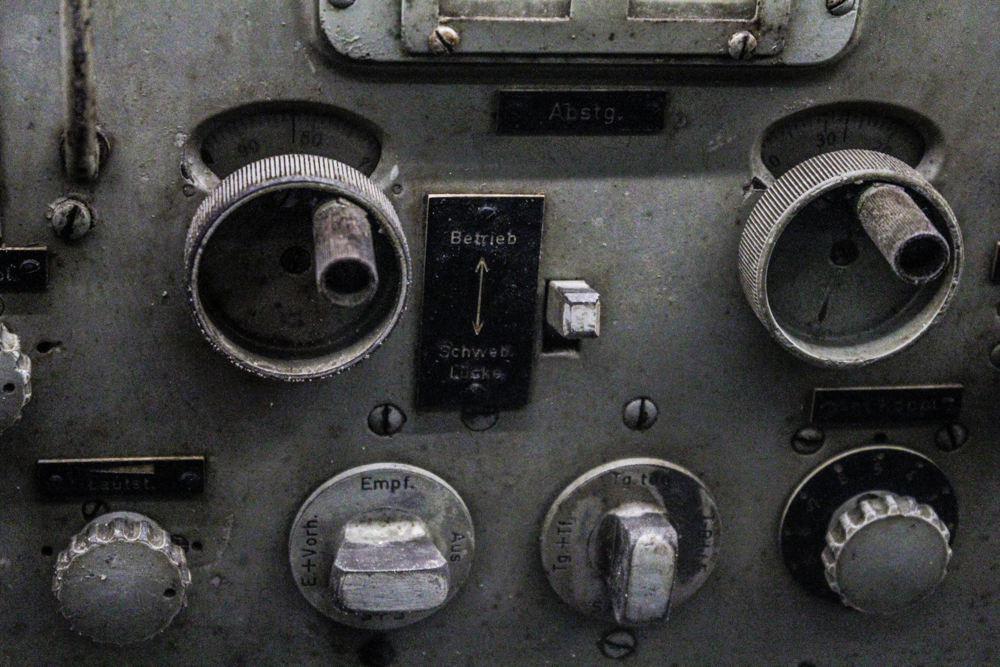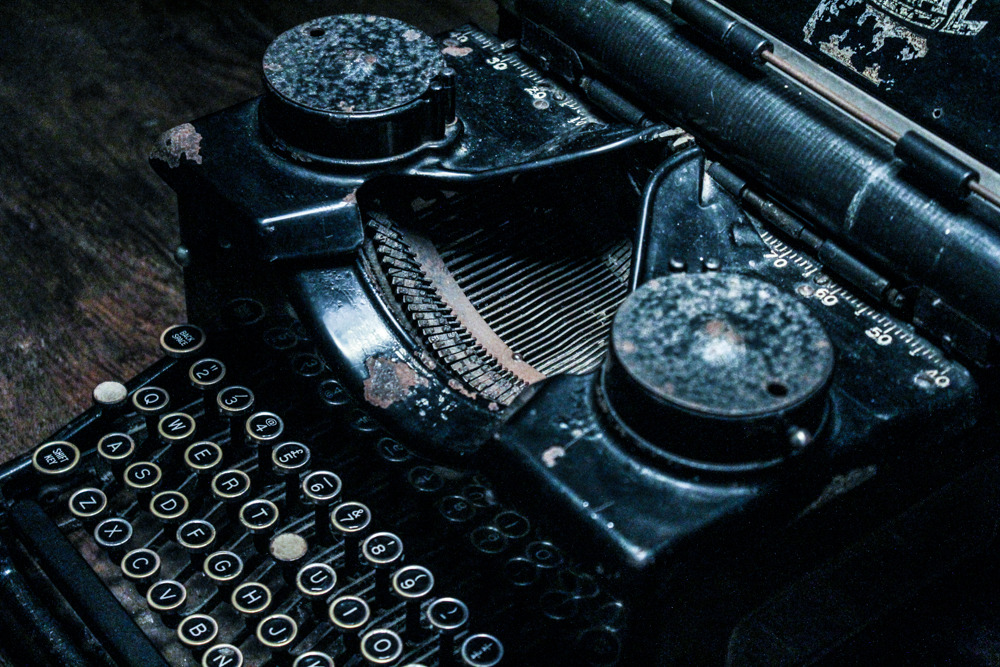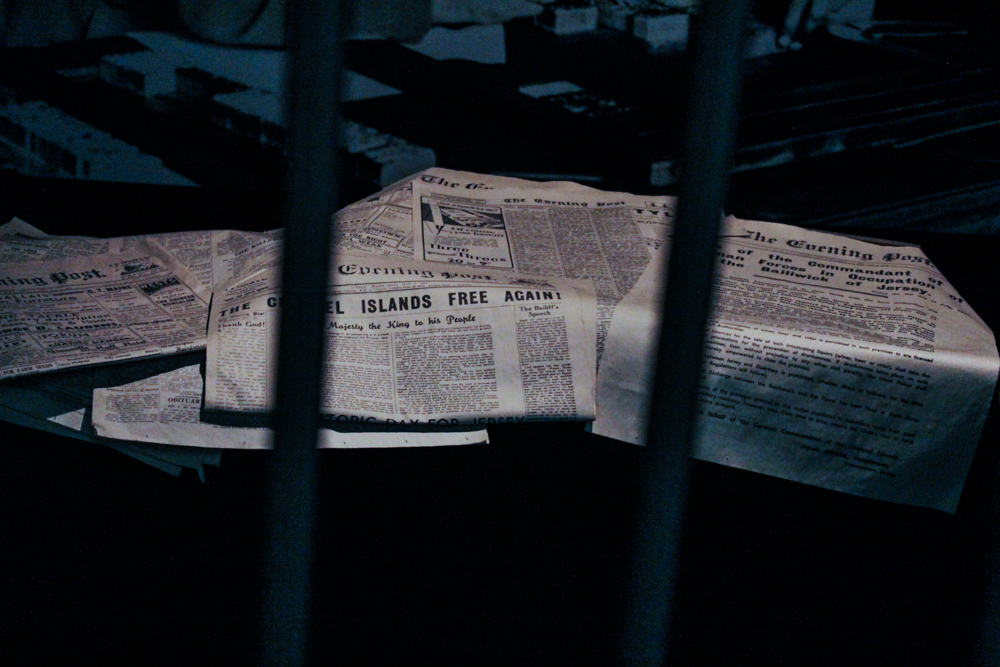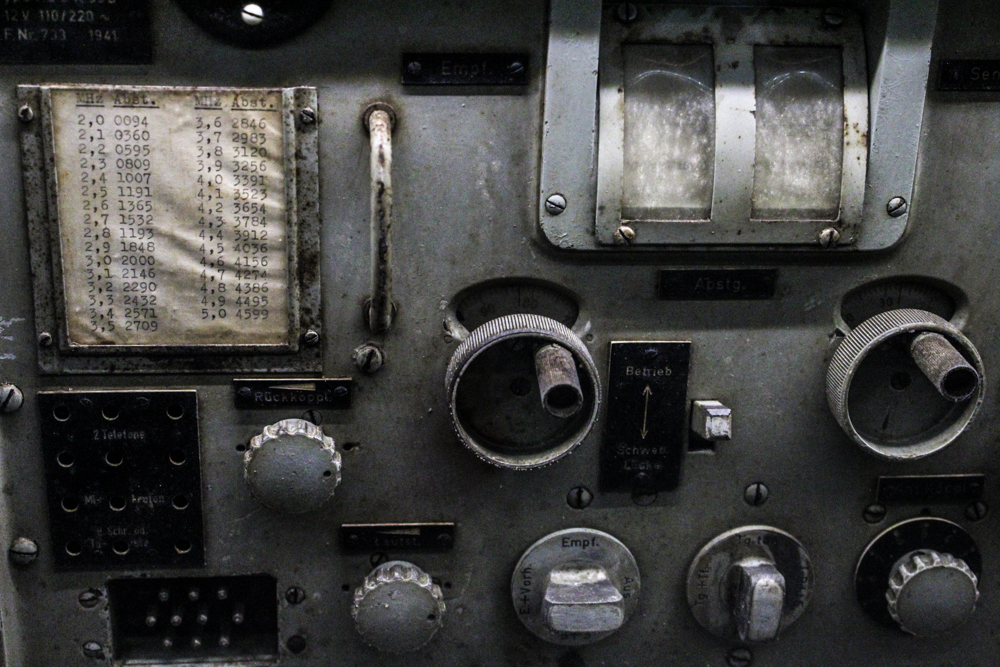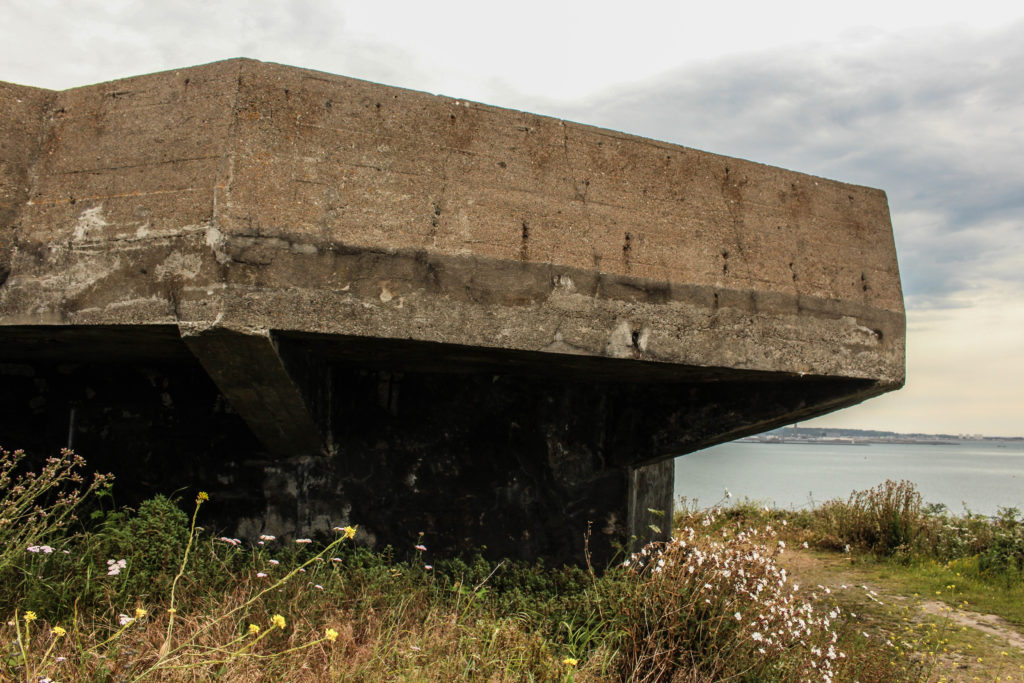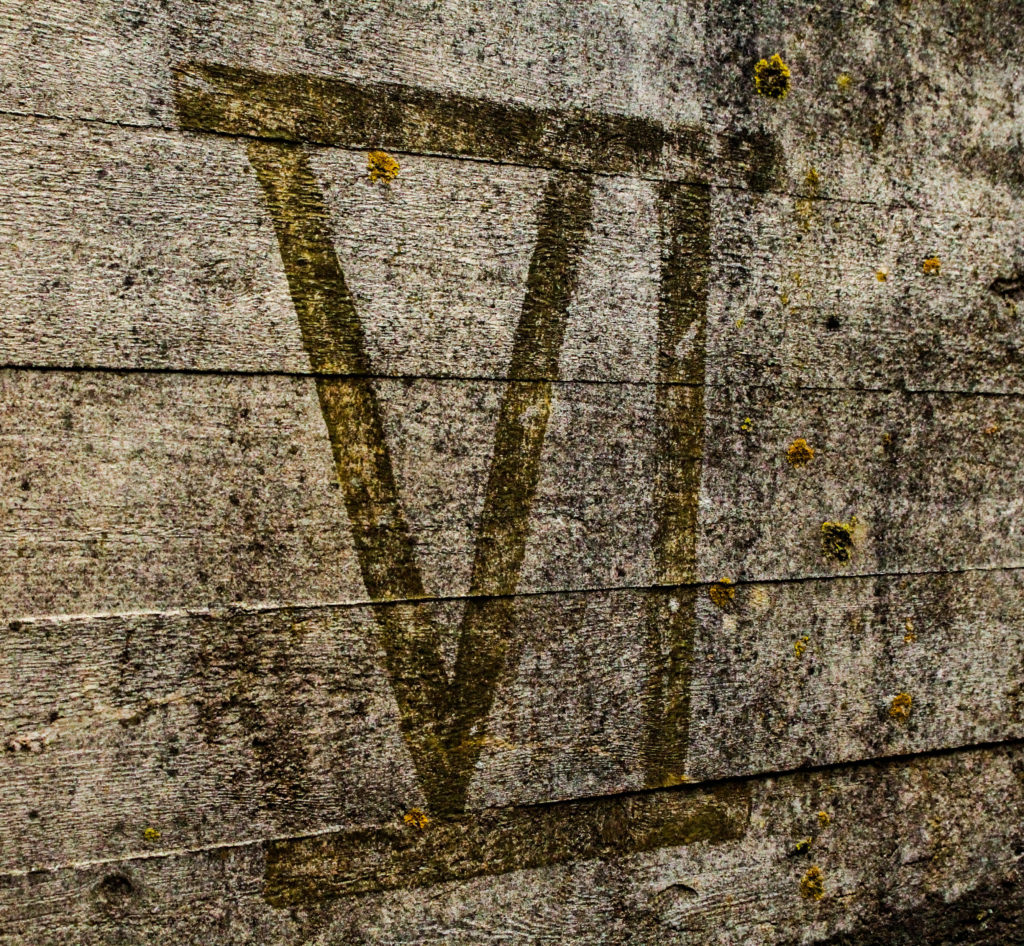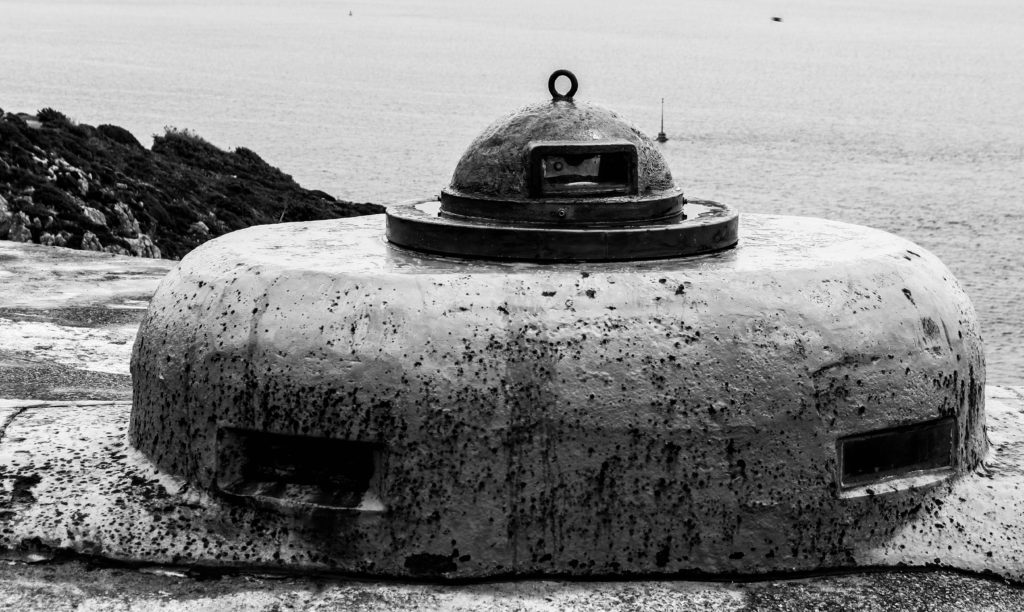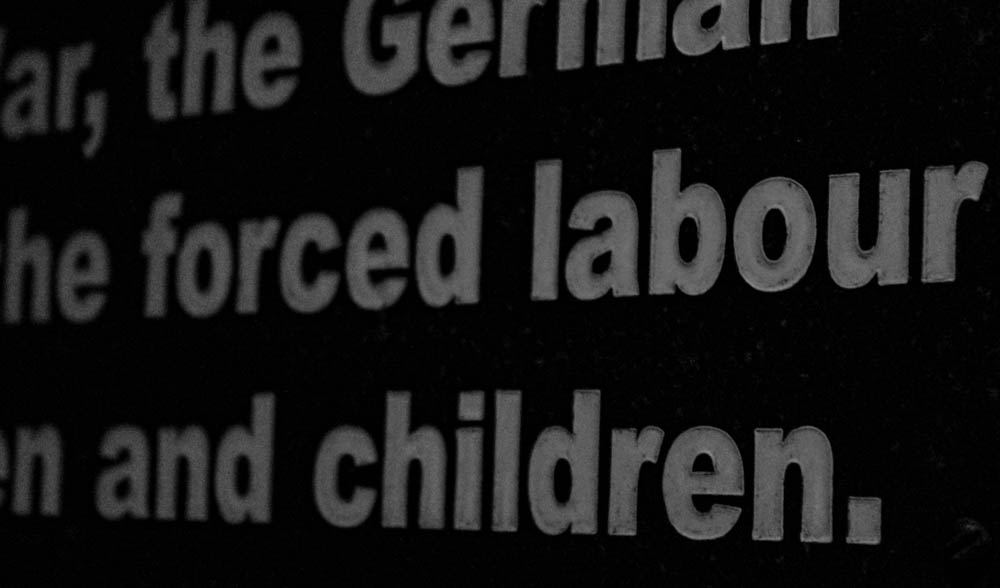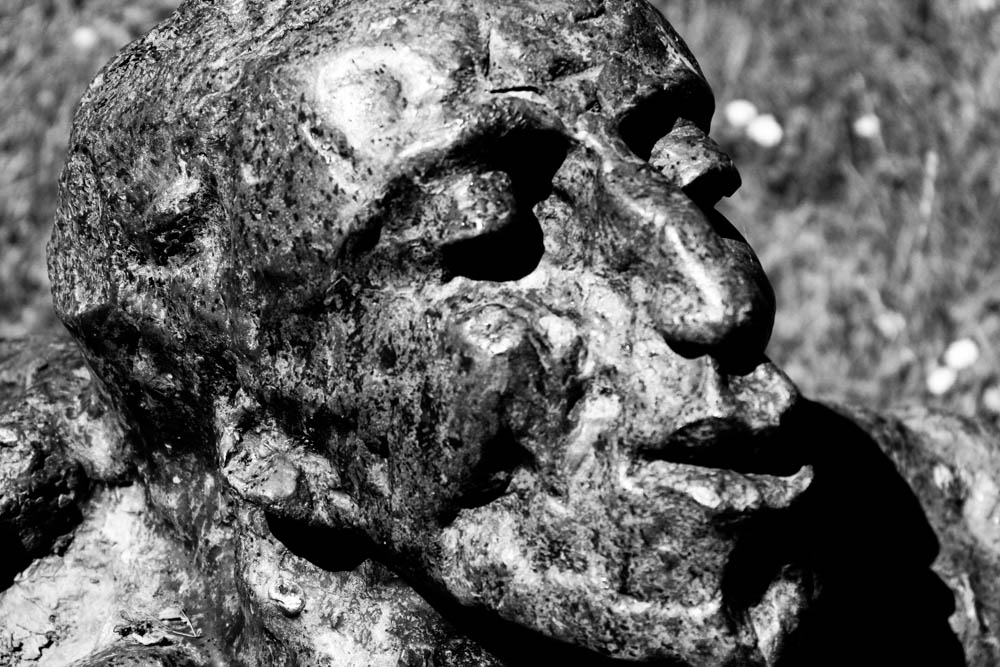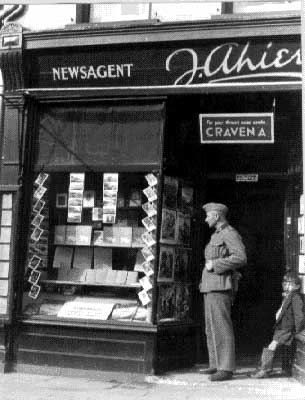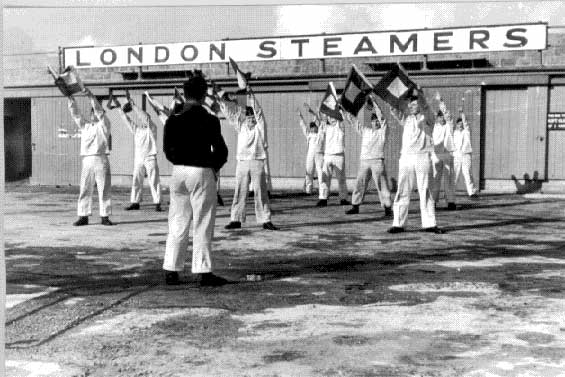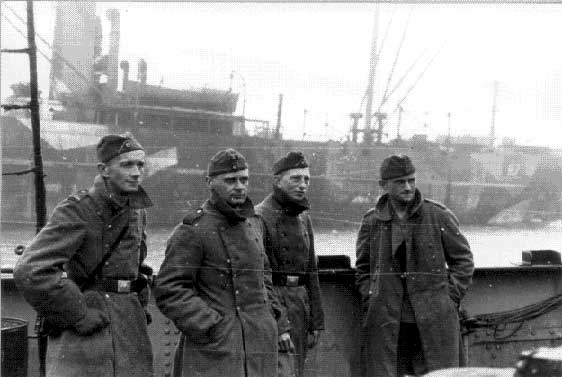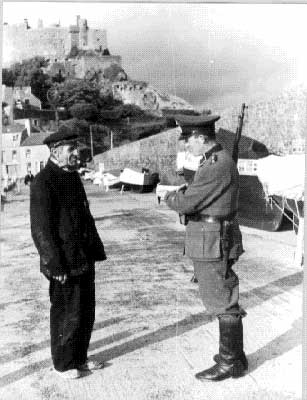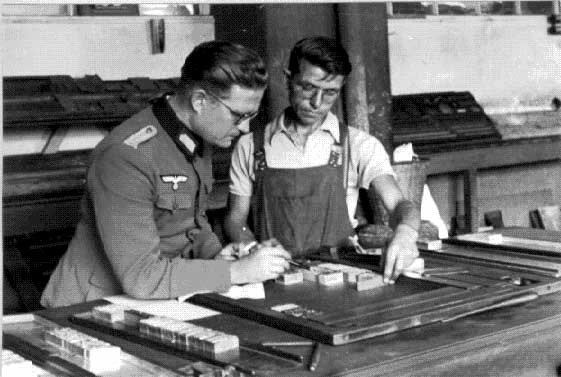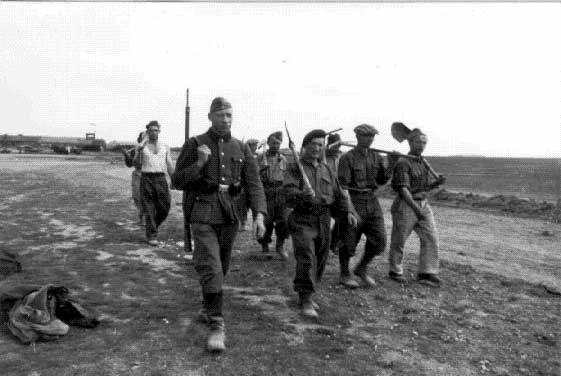During the first half of the visit to the archives we had a talk and found out a lot about the content of what is stored at the archives and pieces of historical facts and data that were shown to us.
I learnt that when people immigrated to Jersey, they were given "Alien cards" which acted like visas and identification cards.
The earliest record that the archives hold is from 1378 which is over 600 years old.
The archives also hold police records, for instance, they have a record of a boy named Louis Belamore who was 13 years old, and he was taken to court for shoplifting. The result was that he was banished from the island of Jersey as he was not born there, forbidding him to return.
In terms of the occupation of Jersey, the archives hold records of the King's letter to Jersey, stating that the island should be demilitarized. They also have a copy of the terms of surrender, troop records and typed out BBC news. The archives hold over 30,000 occupation registration cards that were required for every islander who was over the age of 14.
Louisa Gould was an islander who sheltered a Russian prisoner, however she was eventually caught. I found out that islanders were allowed to send Red Cross letters to the UK, however they were only allowed to use 25 words and were meticulously censored by the soldiers.
German soldiers also sent letters back home for Christmas, however, some of the post workers stole some of the letters. One of the post workers who stole the letters kept them for over 60 years until they donated them to the archives.
For the second half of the visit, we went upstairs to firstly look at some of the copies of items held by the archives. I saw an identity card, under the name of Goldman which had a large red cross across it to display that they were Jewish.
I wrote down some of the reference numbers of some of the artifacts what can be requested or viewed online:
German letter: B/A/W30/1
Letter from Captain Sanders who was the captain of the first vessel: L/C/219/A1/2
Liberation letter: L/C/18/1
Afterwards we has a guided tour inside two of the rooms where the archives were kept and looked at the real-life artifacts. We also learned about the process of looking after the artifacts and also the measures the archives go through to making sure the items are in the best condition they could be. For example, when you walk into the vault, you are hit by a wall of air as it prevents insects from entering the vaults. If a fire occurs, the vaults close within 30 seconds and then a gas is released that removes the oxygen in the air which stops a fire from occurring from within the room.
I learnt from this trip the importance of the archives as you can learn little things that make up a bigger picture of the world during that time period. I also realized the extent the workers go through to preserve the artifacts and how meticulous the care is.
All posts by Emelia S
Filters
Jersey War Tunnels
Shoot
As a class, we were given the opportunity to explore and photograph the War Tunnels. Because the lighting is very poor in the War Tunnels, my image quality was a lot poorer as the shutter speed and aperture had to be very low and slow to enable as much light possible to the lens. I wanted to photograph objects, architecture and other quirks of the War Tunnels.
Edits
To manipulate my images, I used Adobe Lightroom Classic cc. Most of my images needed their lighting adjusting, so I manipulates the light, darks, whites and blacks. I also adjusted the white balance slightly as a few of them turned out orangey due to the poor lighting situation. I then made other manipulations to my images depending whether I thought they needed to be cropped, have the contrast played around or adjust the clarity. Overall I'm quite happy with my images as having to adjust my camera to the poor lighting and finding the right settings for the right locations were a challenge.
My Favourite Images
These are my favourite images because I feel it features many key componants of WW2, three of which would be used through day to day life. I like the close up shots of the type writers and the switchboard. I like the contemporariness of the images and you don't need to see the whole object to realise what it is. I also like how the newspaper is behind. The newspapers were censored by the German command, and the bars can signify how the island were prisoners as even their access to knowledge was banned.
Mood Boards
Francis Foot
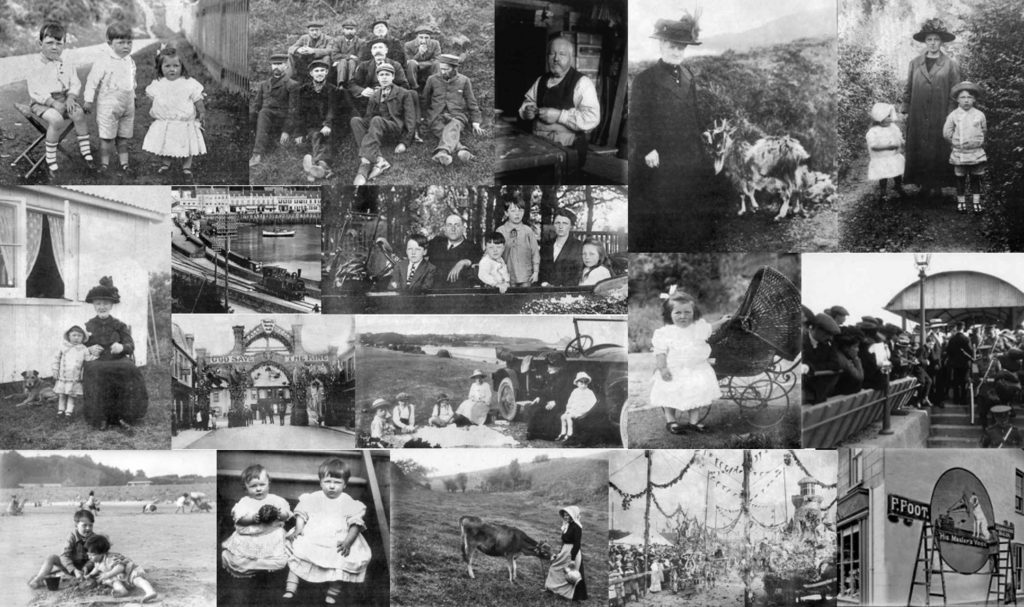
bunker zine
This is the overall layout of my zine. For my title I decided to use a very military style font to display how the zine is about WW2. I also decided to make the front cover a double page spread, the front cover a has the gun turret and the back has the seagull in the sky. The first pages are also a double page spread with a black and white image with the bunker then an archival image or a soldier looking through a telescope. I decided to put these together as the bunker gun and the telescope look very similar. I then placed a picture of roman numerals that were on a bunkers wall alongside an image I took of a picture of a soldier that was in a bunker. I put these together because I like how simplistic but bold the numerals are and the defiant look on the soldiers face. I then did a double page spreak of a black and white image of a bunker. I wanted to include this image as it looks like the path is leading the audience to take the journey to explore the bunkers which is reflected in the next pages that features images of the canons and bunkers. I featured a black and white image of a sculpture of a man which was a memorial at La Hogue Bie dedicated to the fallen soldiers of the war. I made this black and white to emphasize the textures of the sculpture and give more depth to the image. The next pages feature a hat and the top of a bunker. I placed these images together as I feel like they imitate eachother. It creates humor in the book as they are almost making fun of eachother.

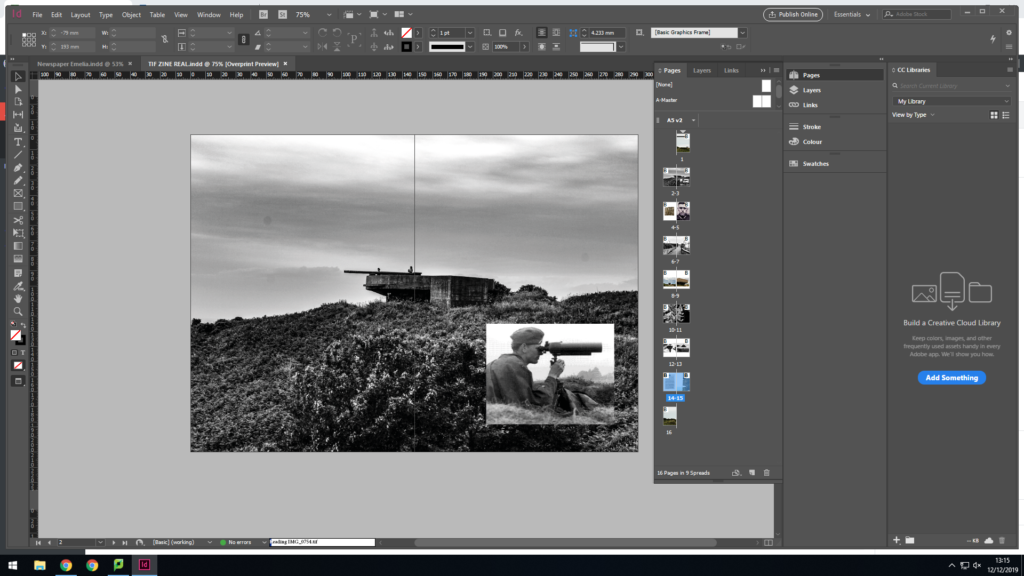


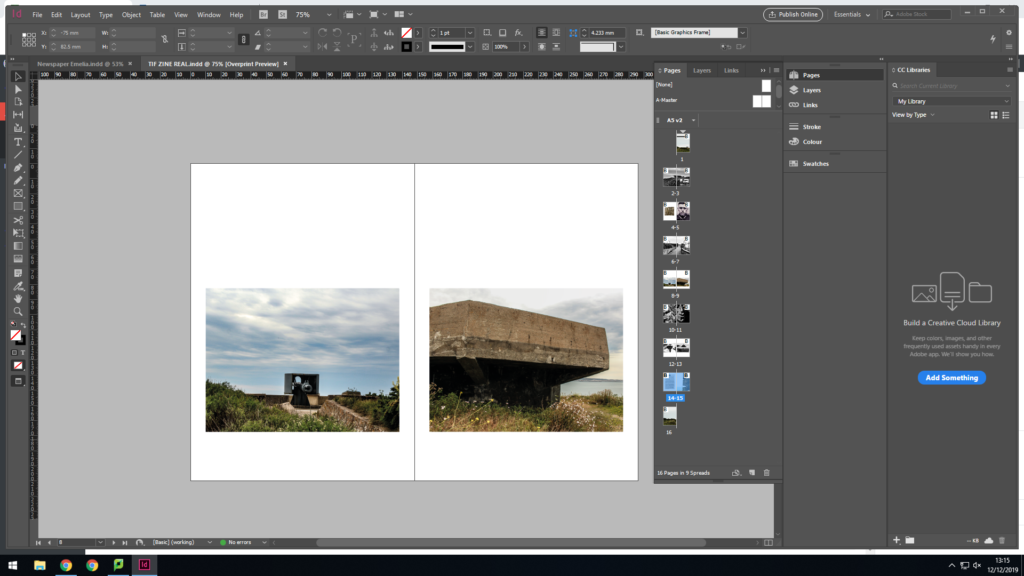


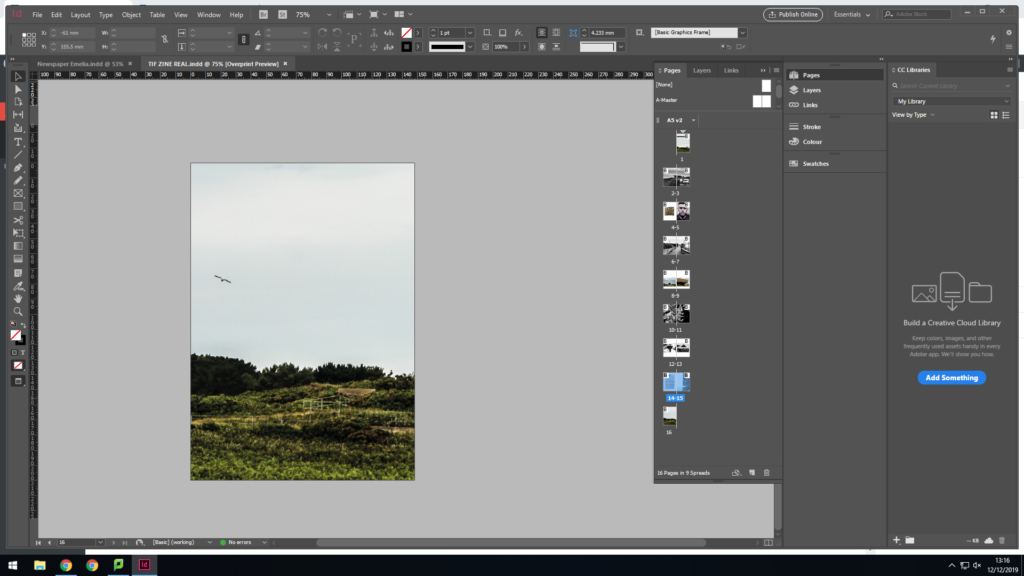
zine – planning and research
A photo zine is a self-published, often handmade collection of photographs laid out in a magazine style. It can include written text and illustrations as well as photos. They are designed to display and share photo stories. A photo zine can be a single, one-off publication. The type of zine I will make is a single-section zine. This is the standard zine which is like a small book. My zine will be A5 paper size. I am going to feature photographs on their own pages as well as some having a double page spread.
Examples of Zines:



Noirmont Bunkers
With school, we went to visit the WW2 bunkers at Noirmont. Tony Pike guided us around the bunkers and told us information about how the bunkers were made and the specific uses that everything had. We were then given an hour to go around by ourselves and explore the bunkers. We then went inside the bunker that has been restored and looked at the objects and infrastructure of the bunker at Noirmont. After I then went outside and climbed around the cliff to photograph the outside of the bunker that faces out to the sea.
My Photoshoot



About The Shoot
My photoshoot consists many aspects such as the exteriors of the bunkers, the interiors of the bunkers, objects inside the bunkers, the surroundings of the bunkers and photographs that were inside the bunkers. I wanted to take a wide spectrum of images for when I created my zine, I have as many choices as possible to create a certain narrative.
My Manipulated Images
To manipulate my images, I rated all my photographs with a certain number of stars, 5*= the best and 1*=the worst. I then selected my images from 3* and above to then go through them and colour coded them. Green=the best and red=the worst. I manipulated all of these images and then went through them again and re-colour coded them.

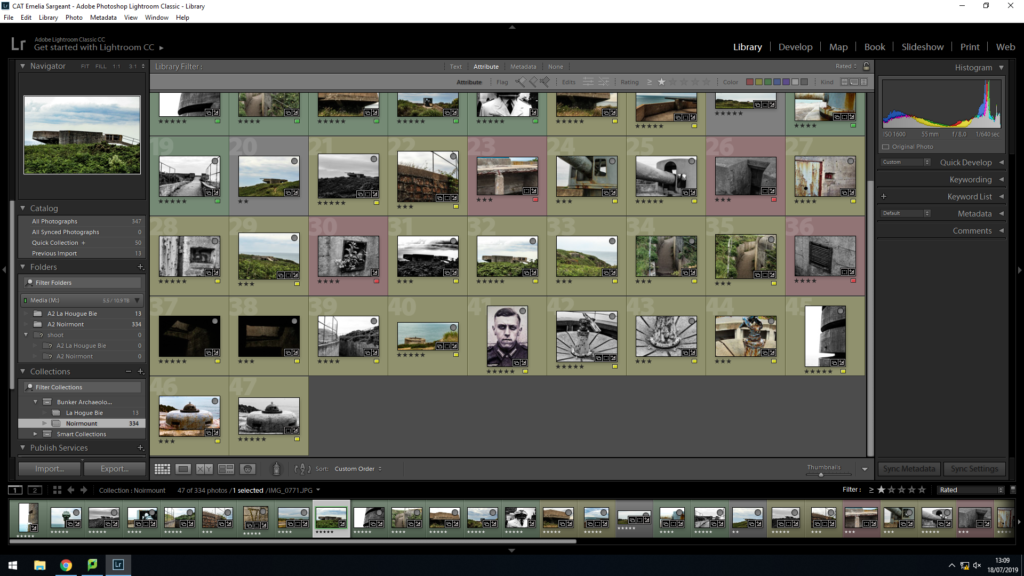
The Colour Coded Selection
Here are my colour coded images. I also considered the yellow images as they had potential. By colour coding my images meant I was able to make a more concise selection of what images I wanted to use in my zine.

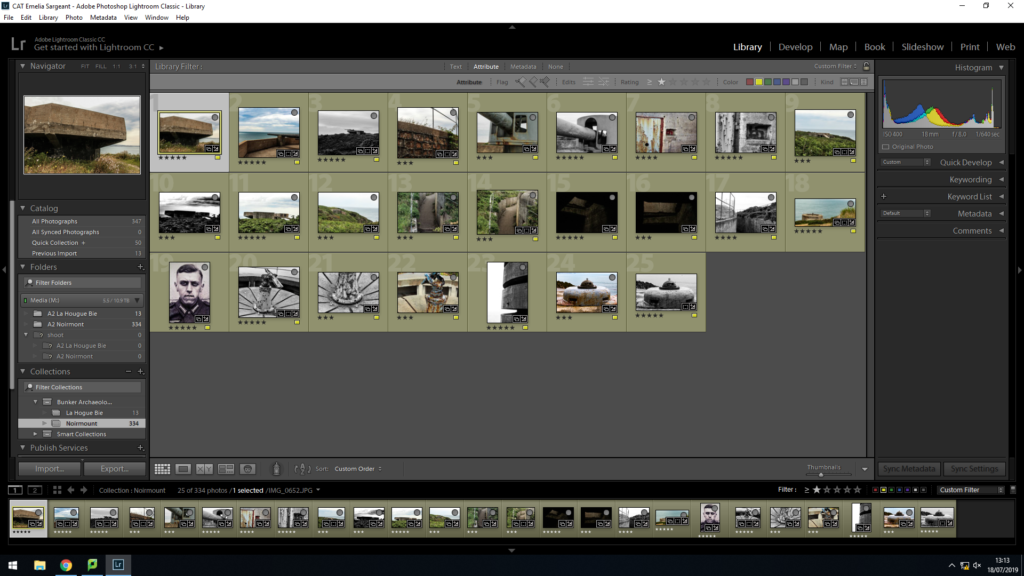
My Best Manipulated Images
To manipulate my images I used Adobe Lightroom Classic. I adjusted settings such as highlights, shadows, whites, blacks, clarity, contrast, vibrance, adjusted the white balance and I also cropped some of my images. After using the rating and colour coding system I decided that these would be the images that I will use in my zine.
Photographic Archive Essay
The definition of a photographic archive is: a collection of photographic images, either as physical media or as a digital archive. Photo archives usually consist of libraries or museums that hold a collection of images. Not all archives are by museums and libraries though, individuals and institutions can have archives. There is a distinction between private and public archives. Everybody has their own private archive, whether it is the photographs taken on your phone, or the family photograph albums kept inside the house. Public archives are usually by museums and libraries and usually contain a number of historical and current photographs.
Photo archives are incredibly important on capturing and preserving historical moments. Whether it is a simple photo that captures day-to-day life, or major images that capture a crucial event, or an image capturing objects/buildings/landscape/portraits. By preserving moments in time, the photos can be used to reflect and compare, and can provide an insight into how life was at a certain moment in time. Public archives especially, provide a key role in analyzing historical periods/events are photographs can provide a true representation of what happens.
Photographic archives are usually contained and stored in order of their date and have reference numbers. Reference numbers enable efficiency of location and storage of the individual/collection of images. Physical documents like photographs are often stored in acid proof boxes to prevent damage and can also be handled with gloves to aid in preservation. It is crucial to maximize preservation of archival images as they provide an insight into the cultural and historical memories of the past that can remain forever. They also provide a more factual and insightful view into the past.
An archive is basically a collection of memories, and photographs capture moments in time 'memories'. By holding onto these moments in time enables archives and museums to provide a more realistic portrayal of that moment in time in that specific era. Both photographic and material archives are very important to me. I like to take pictures of what I am doing in both my day to day life and of people I meet. I have a book at home containing portrait photos I have taken of people on a disposable camera. I also have a box that I keep in my wardrobe containing items that are incredibly precious to me, including photographs of my grandparents, cards I have received from those who are important in my life, to my grandmothers necklace that she gave to me before she died. I believe that everyone has their own archive of items and photographs that are precious to them, and just don't realize how important and prominent they are to their lives.
As a teenager, my current archive consistently features people/friends I am with and places I am visiting. I am guessing when I'm an adult my photo-archive will change as I grow up, and it will probably mainly consist of the children I will have. I am guessing this as my Mums personal archive changed from photos of herself and her friends during her youth, and now her camera roll mainly consists of myself, my sisters and things to do with her work, as she runs her own business and she needs to take photos for their Facebook page. I am also guessing that my archive of adulthood will be more mature photos, as I tend to take photos which would be considered silly and childish (for example my friends at an unflattering angle). However I also think that my archive will still be mainly based on people as I have always had an interest in photographing portraits of people as I find them interesting to look at.
My personal study is on the Occupation of Jersey, which is occurred during World War 2 and was during Sep 1, 1939 – Sep 2, 1945. I was born in 2001 so there is a 62 year difference from my birth to the beginning of the war. I have no personal experiences with WW2, the only personal knowledge is from my granddad and his sister when they had to move from Jersey to the UK to live in the countryside as they were children and that was where the children were sent to during the war. Therefore looking at archival material enriches my personal study as it provides a direct image of a specific moment of time. I am able to see the development of buildings and the way people lived. By looking at these images I gain a greater idea of what life was like during WW2 meaning I can personalize my work to fit the image I think what WW2 was like. Also for my zine I needed to create a narrative and by looking at archival material aids in me creating a narrative and realizing that I could combine my images and archival images to create a running narrative.
I have learned that photo archives provide a key role in displaying an alternative view to how life was during the Occupation compared to history lessons. Photographic archives show a more wholesome way of life and just shows that the war wasn't just guns and explosions, it was people living their day to day lives, adjusting it to the conditions of the war. It also shows the war from a German perspective as some of the photos from the Societe Jersey were taken by German soldiers. Although WW2 was a brutal and horrible war, people still had to live their day-to-day lives, and the small activities that they did that were photographed provide a more accurate insight in what they did and how they lived. I also learned from photographic archives how buildings are built for specific uses and the difference between German architecture compared to Jersey architecture both now and then.
Photo- Montage
A photomontage is a series of individual photographs, collectively of one subject, arranged together to create a single image. Sometimes a photomontage can move and include video. We are used to seeing single photos. Most photographs are created in a fraction of a second and do not convey a duration of time.
This information is from expertphotography.com
Examples of Photomontage
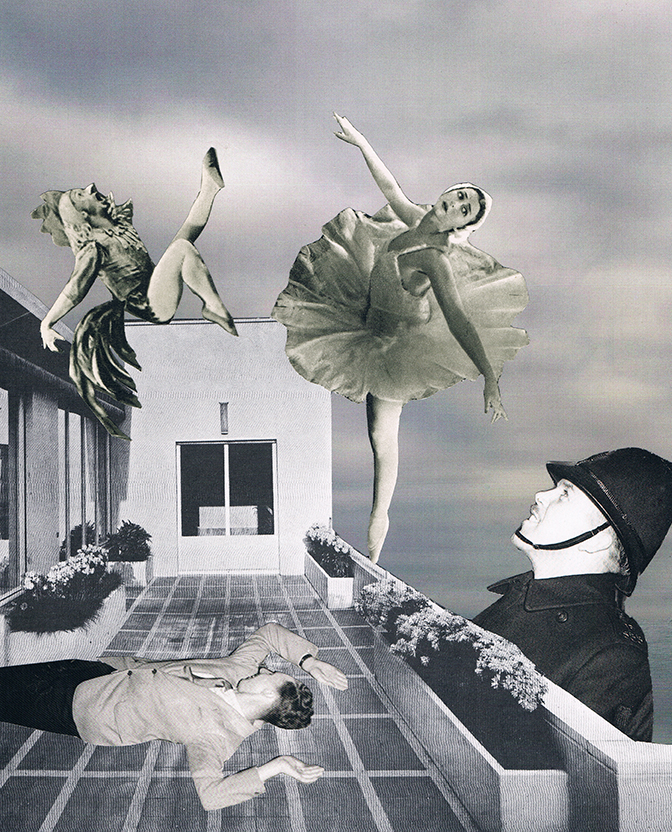
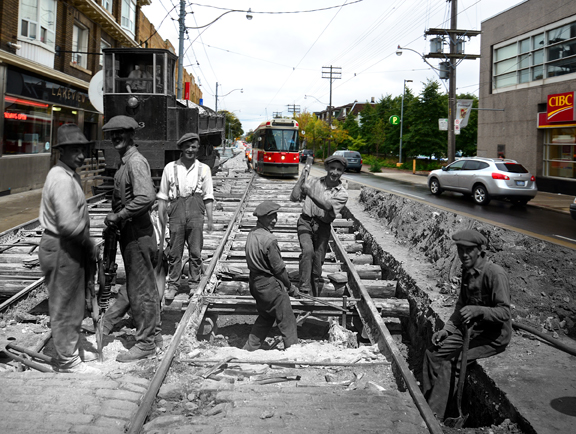
Dundas and Ossington 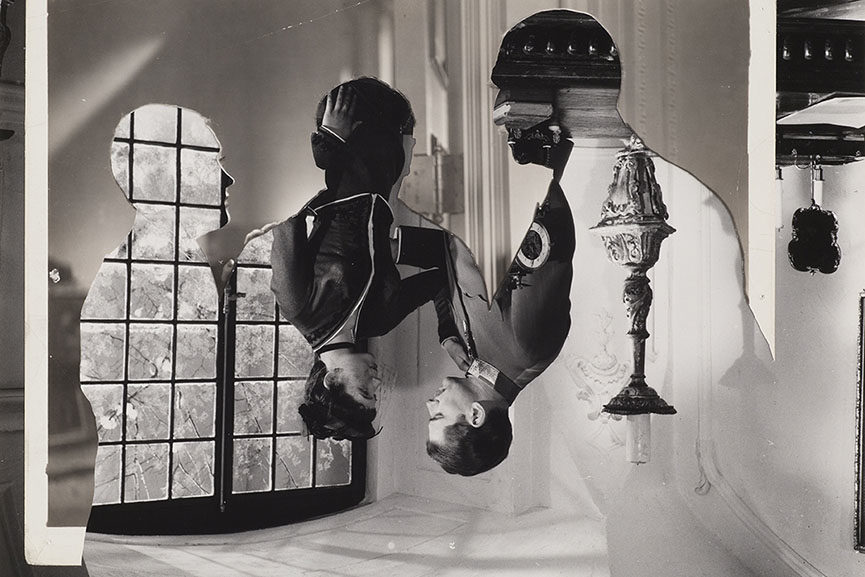
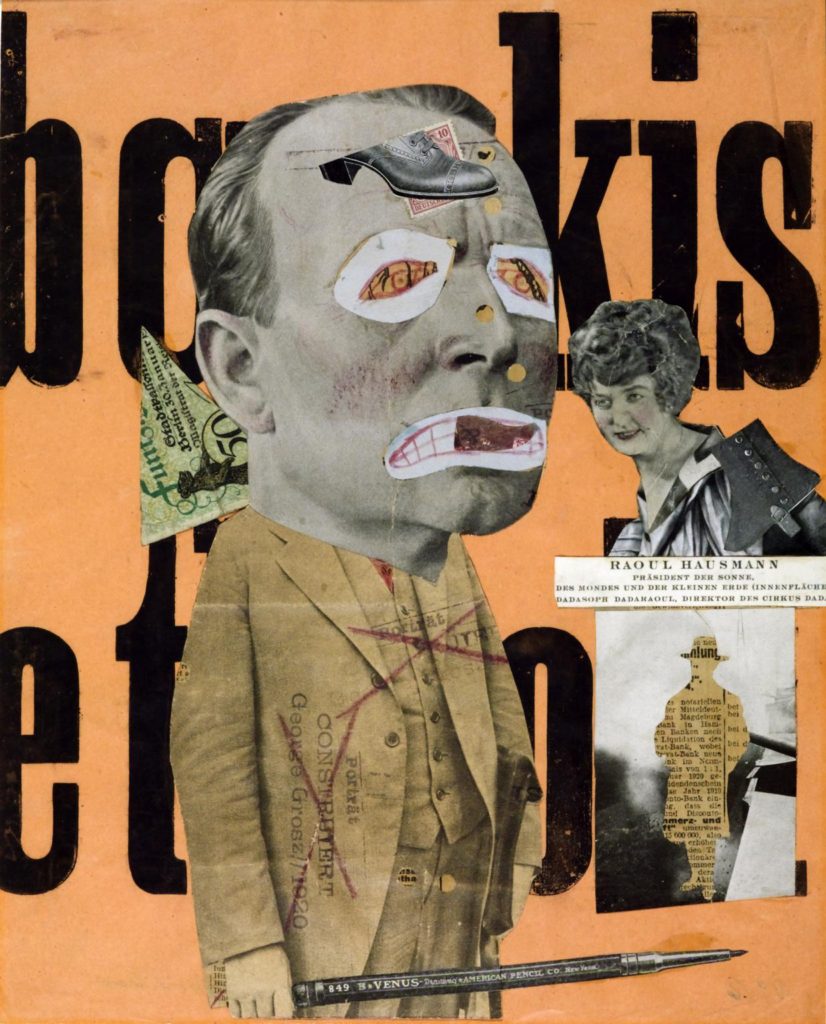
The Art Critic 1919-20 Raoul Hausmann 1886-1971 Purchased 1974 http://www.tate.org.uk/art/work/T01918
My Photomontage

For my montage I combined using my own images, images from the jersey archives and images from the newspapers. My own image is of the bunker on the far right. On lightroom I manipulated my image by changing the light intensity, clarity, dehaze and contrast. I also converted the image to black and white to contribute to the aesthetics of the archive and newspaper images. To create this montage I printed out the images and used a stanley knife to cut out the parts of the images I wanted to use and then arranged and glued the images onto the newspaper.
My Own Image Used

La Hogue Bie – The Photoshoot
At La Hogue Bie, there is a war memorial commemorating those who were involved and died in the war. We went to visit the memorial and photograph what we saw. The lighting in the underground memorial was extremely dark, so we had to adjust our cameras to cope with this light. However, as a result of this, quite a lot of the images were of a poor quality due to the high ISO and slower shutter speed. Here are my images before manipulation:
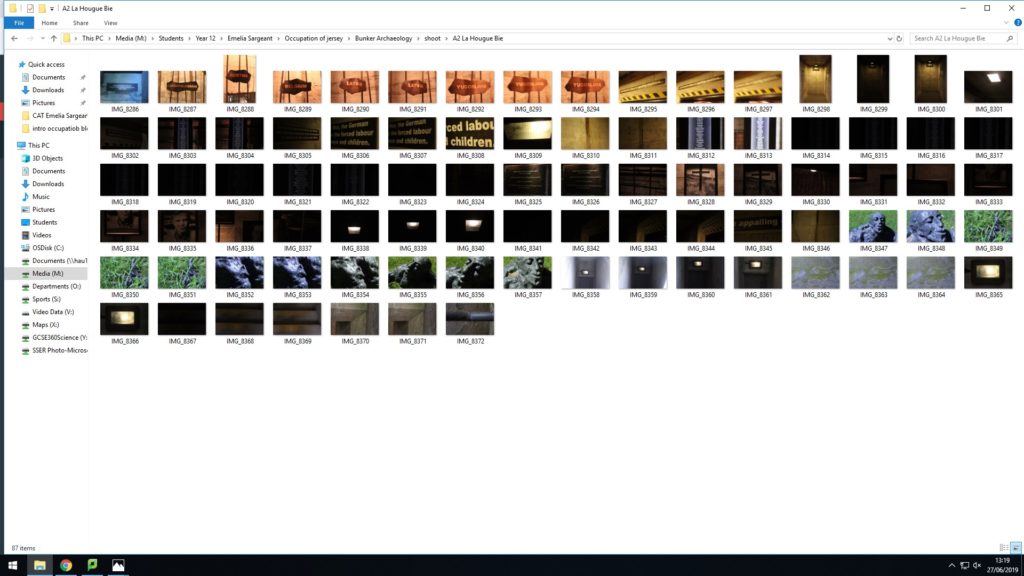
I like the photos I took of the statue and the light memorial with the names so I will choose to manipulate them. Here are my images after manipulation on adobe lightroom:
These are my manipulated images. I quite liked making some of the images monochrome then increasing their clarity and adjusting the light settings, I aslo adjusted some of the white balance for some images and did some cropping. The best images were the images taken of the statue in the natural light as it enabled me to take images of a high quality.
My Trip to the Jersey Archives
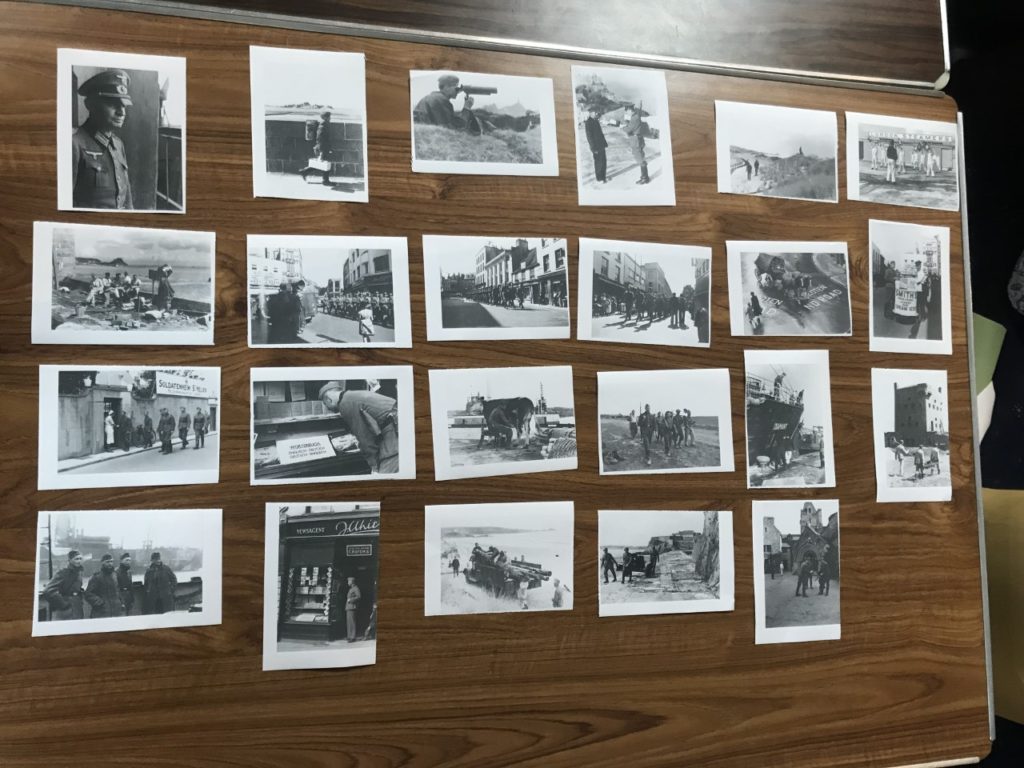
On my trip to the archives we were displayed with a numerous amount of WW2 images. We are then assigned the task of selecting which images we thought were aesthetically pleasing and challenged to lay them out in a series to create a story. The image above is my groups final result. We chose not to focus on the guns side of the war, and to instead focus one the everyday regular aspect of the individuals lives. Our story is about the rations and the process of getting the food and supplies for the food.
I tended to prefer the images that focused on the people involved in the war rather than just the guns, as many people who want to learn about the occupation of Jersey tend to be fixated on the actual warfare side of the occupation.
This trip has given me an insight in what I want to do. I would like to further explore the idea of the people involved in the occupation of jersey or maybe the more personal objects that they owned during the war. I could explore personal archives of people such as my family and compare them to public archives. Or I could visit places such as the War Tunnels or peoples own personal collection of objects and photograph them.
Here are some of the archival images that I liked and requested in high resolution. We got a brief history into the photographic archives and looked into the lives of both the German and Jersey people.

